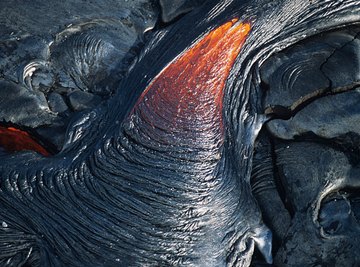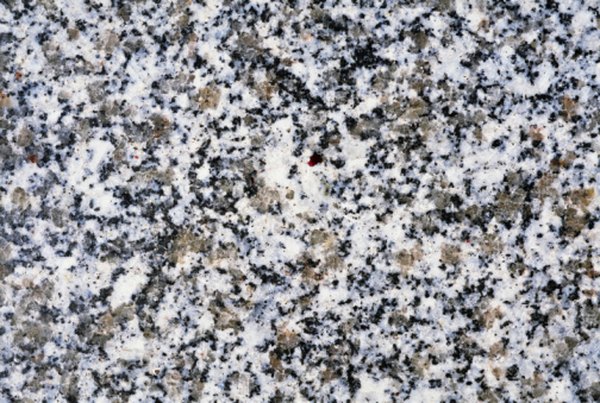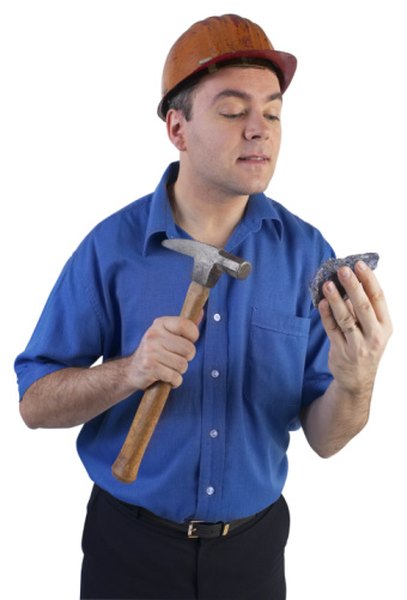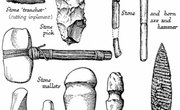
Obsidian, or volcanic glass, is not only a beautiful ornamental rock, it was once used by Native Americans to craft arrowheads and cutting tools because of its strength and sharp edges. There are many localities that contain obsidian deposits in the United States, and knowing how and where it originally formed will provide significant information on locating these outcrops for collecting. It is also important to understand the variations in color, which will assist in identifying deposits of volcanic glass.
- Rock hammer
- Collection pack
- Geologic map
- Rock identification guide
Use a rock and mineral identification guide to check the rock type in the field, such as those published by the National Audubon Society.
The edges of volcanic glass are very sharp and can easily cut a person.

Learn about obsidian's origins and how it is formed. Volcanic glass is an igneous rock created when silica-rich lava is extruded directly into water. The instant cooling does not allow time for crystals to grow as in other igneous rocks. This creates a glassy characteristic because the minerals are too small to see individual crystals, as in granite or other igneous rocks.
Use field guides to gain a general knowledge of what obsidian looks like, especially its color and mineral variations. Despite its silicate composition, which typically produces white or clear minerals, obsidian is dark because the minerals remained mixed like a soup. Certain mineral inclusions can give obsidian different colors. For instance, iron and magnesium can give the rock a green appearance, while hematite will produce reddish-brown hues.
Obtain a geologic map of obsidian localities. The mountainous regions of the western United States have a lengthy geologic history of volcanism which created a mass of obsidian deposits. Mines, claims and other known locations are found in abundance in Arizona, California, Colorado, Oregon and Utah, among others. To locate these regions, contact the U.S. Geological Survey (USGS) or the Association of American State Geologists (AASG) for maps and information. A list of known mining sites can be obtained from mindat.org, which can provide a basis for searching the right areas.

Get permission to go rock collecting. No matter where the deposits of obsidian are located, always check with the property owner before attempting to collect on the land. Rock collecting in general is prohibited in many national and state parks, as well as mines or other commercially owned areas. Collecting from road outcrops and cliff faces is not only illegal, but also very dangerous. Be sure to wear proper gear and always get permission to be on that site.
Go collect! Because obsidian is easy to break (like glass), collecting samples from an outcrop is relatively simple. A good rock hammer will easily break large chunks of volcanic glass into small, usable pieces. However, make sure to bring a good collection bag because obsidian tends to be quite heavy.
Things You'll Need
Tips
Warnings
References
- "Mineralogy, 3rd ed."; Perkins, Dexter; 2010
- Mineralogy Database: Localities for Obsidian
- U.S. Geological Survey: National Geologic Map Databse
Tips
- Use a rock and mineral identification guide to check the rock type in the field, such as those published by the National Audubon Society.
Warnings
- The edges of volcanic glass are very sharp and can easily cut a person.
About the Author
Laura Wormuth has been a professional writer for over five years and is currently the communications manager for Cambridge International. She holds a bachelor's degree in magazine journalism and a master's degree in earth sciences, both from Syracuse University.
Photo Credits
Tom Brakefield/Stockbyte/Getty Images
